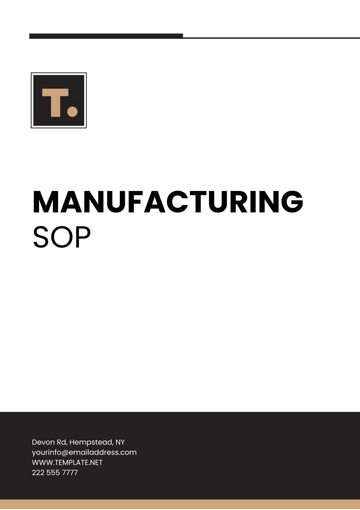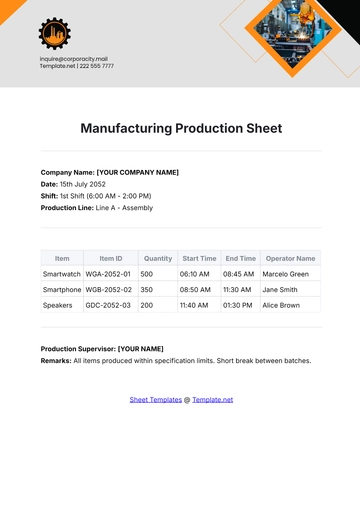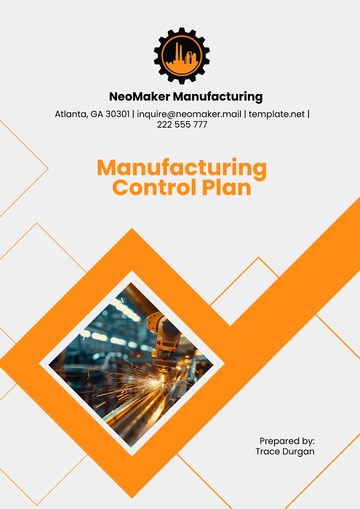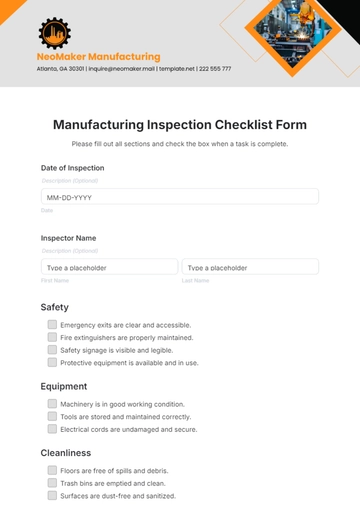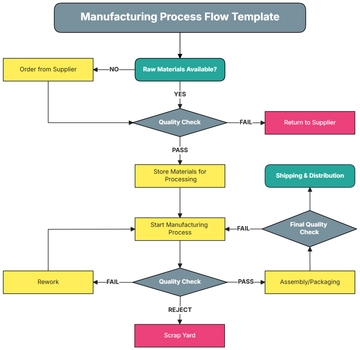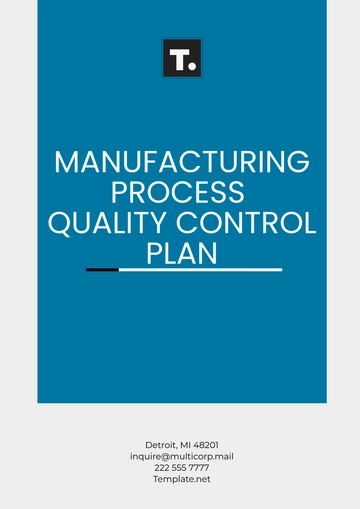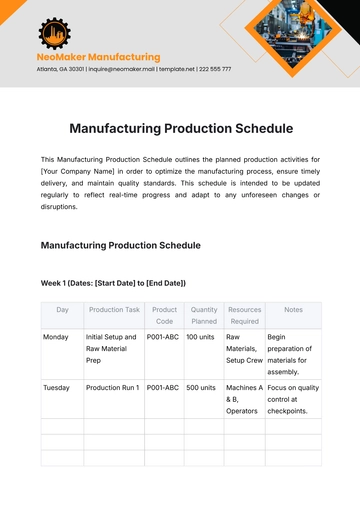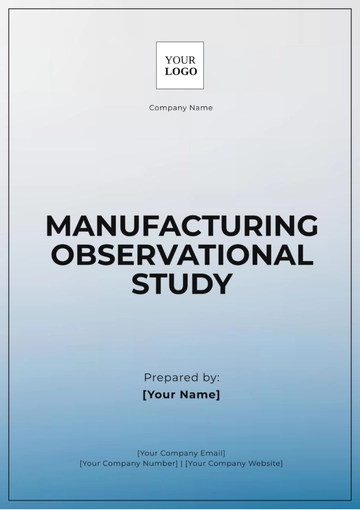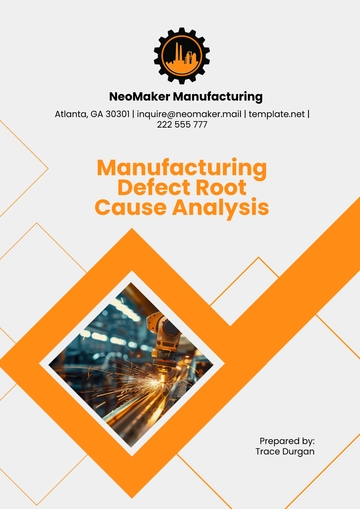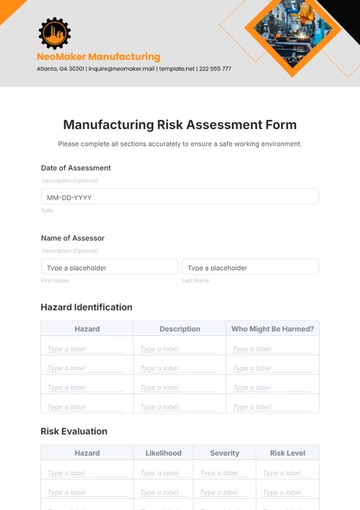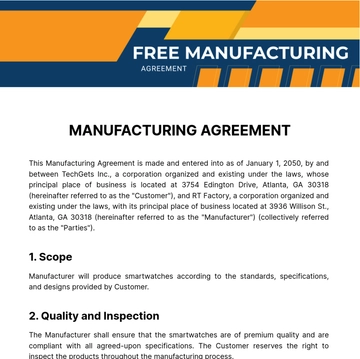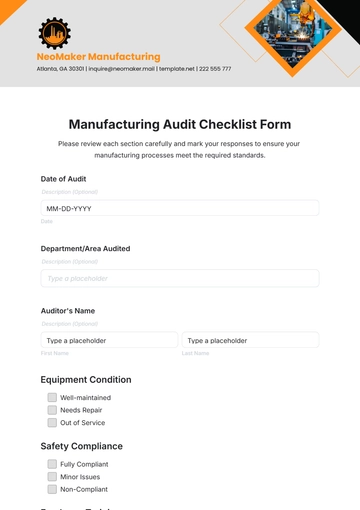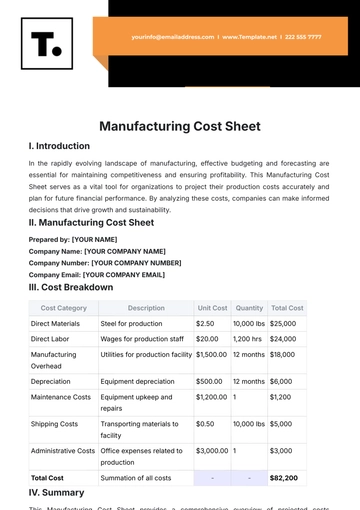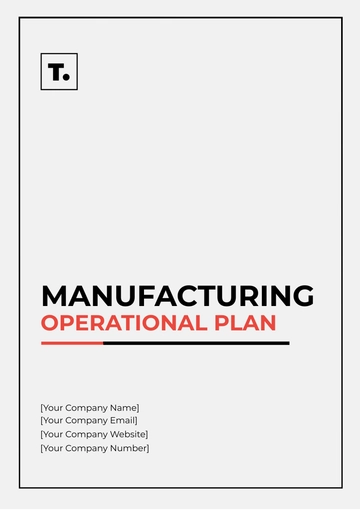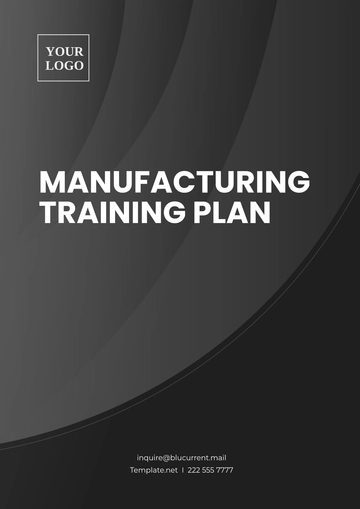Free Manufacturing Journal Article
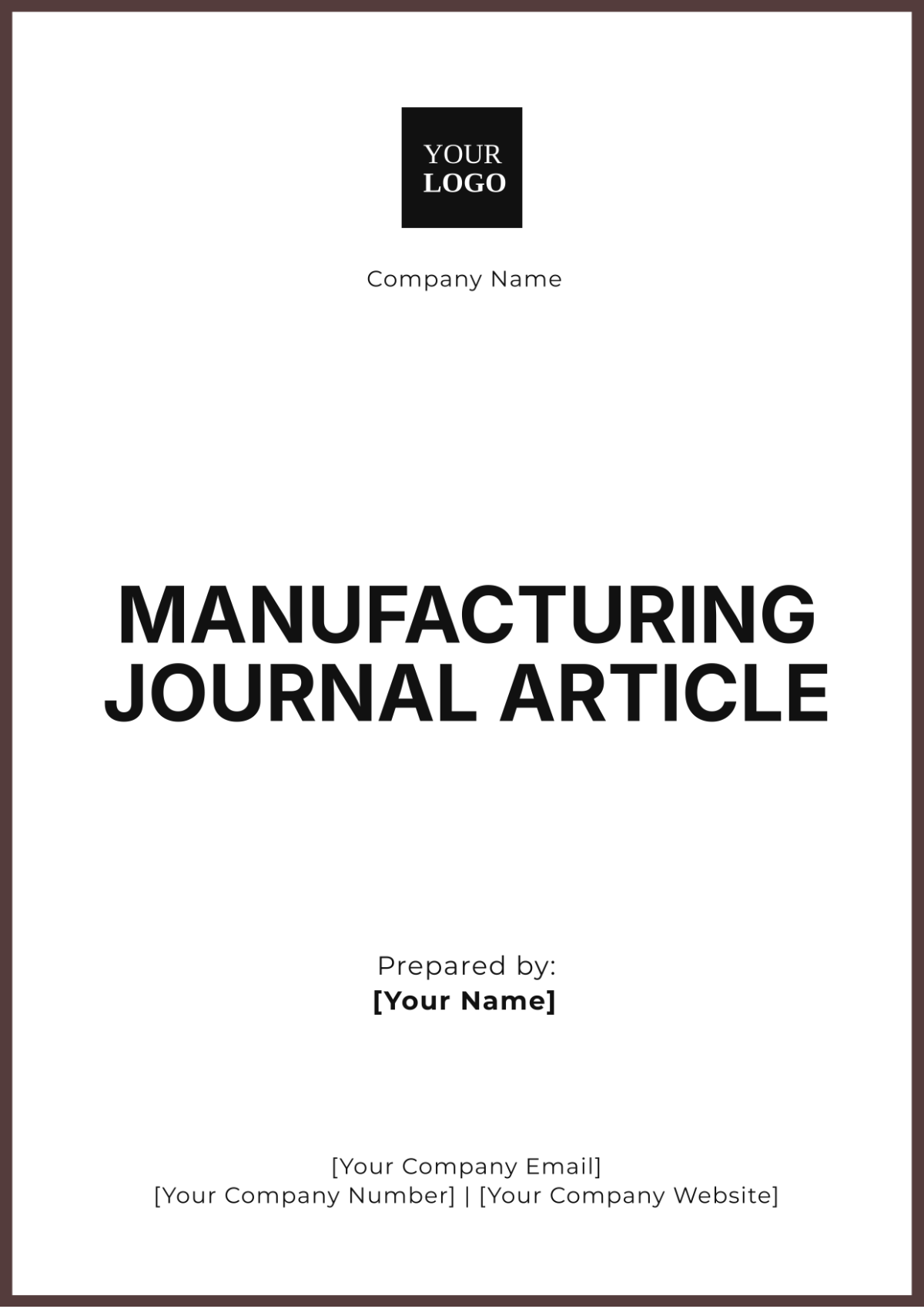
Title: The Role of Automation in Enhancing Manufacturing Efficiency
Prepared by: [Your Name]
Date: [Date]
I. Abstract
This article investigates the impact of automation technologies on manufacturing efficiency. It delves into the historical evolution of automation, its current applications, and the potential future developments within the industry. Through a comprehensive analysis of various case studies and statistical data, the research aims to present a nuanced understanding of how automation is reshaping manufacturing processes and its implications for both productivity and workforce dynamics.
II. Introduction
Manufacturing has undergone significant transformations over the past few decades, largely driven by advancements in automation. Automation has become a cornerstone for enhancing efficiency, reducing costs, and improving product quality. This paper explores the fundamental role of automation in modern manufacturing and its potential to address several industry challenges.
III. Literature Review
The transition towards automation in manufacturing has been widely documented. Smith (2059) outlines the historical development, from early mechanical systems to advanced robotics, highlighting key milestones such as the introduction of Computer Numerical Control (CNC) machines. Further, Brown and Taylor (2051) discuss the economic impact of automation, noting increases in productivity and shifts in workforce requirements. Numerous studies, including Johansson et al. (2050), have explored the benefits and drawbacks of robotic integration in production lines.
IV. Methodology
This study employs a mixed-methods approach, combining quantitative analysis of production data from several manufacturing firms with qualitative interviews conducted with industry experts. Data was collected through company reports, industry surveys, and direct observation of automated manufacturing processes. This comprehensive approach facilitates a robust analysis of automation’s effectiveness in enhancing manufacturing efficiency.
V. Results
The quantitative analysis reveals a significant correlation between the adoption of automation technologies and increases in production efficiency. Companies that implemented robotic systems reported, on average, a 30% increase in output and a 20% reduction in operational costs. Qualitative data from expert interviews reinforced these findings, with many professionals highlighting the transformative impact of automation on their operational capabilities.
VI. Discussion
The results underscore the pivotal role automation plays in the manufacturing industry. Automation not only boosts productivity but also enhances the consistency and quality of products. However, the transition requires a strategic approach to workforce management, as it displaces some labor-intensive roles while creating opportunities for more technical positions. Investment in training and development is crucial to bridge this skills gap.
VII. Conclusion
Automation is undeniably transforming the manufacturing landscape, offering substantial benefits in terms of efficiency, cost reduction, and product quality. While challenges related to workforce displacement and the need for ongoing training exist, the overall impact of automation is overwhelmingly positive. Future research should focus on the long-term outcomes of widespread automation adoption and the development of strategic frameworks to support smoother transitions across industries.
VIII. References
Brown, J., & Taylor, R. (2051). Economic Impacts of Automation. Industrial Economics Journal, 15(3), 213-228.
Johansson, L., Reyes, M., & Zhang, L. (2050). Robotics in Manufacturing: A Comprehensive Review. Journal of Advanced Manufacturing, 27(4), 456-478.
Smith, A. (2059). The Evolution of Automation in Manufacturing. Manufacturing Technology Today, 12(2), 89-102.
- 100% Customizable, free editor
- Access 1 Million+ Templates, photo’s & graphics
- Download or share as a template
- Click and replace photos, graphics, text, backgrounds
- Resize, crop, AI write & more
- Access advanced editor
Streamline your research with Template.net's Manufacturing Journal Article Template. This fully editable and customizable template is perfect for organizing your findings in the manufacturing field. Featuring a clear structure, it allows you to focus on content while easily modifying it using our Editable in our Ai Editor Tool. Ideal for researchers seeking a professional, customizable layout.
